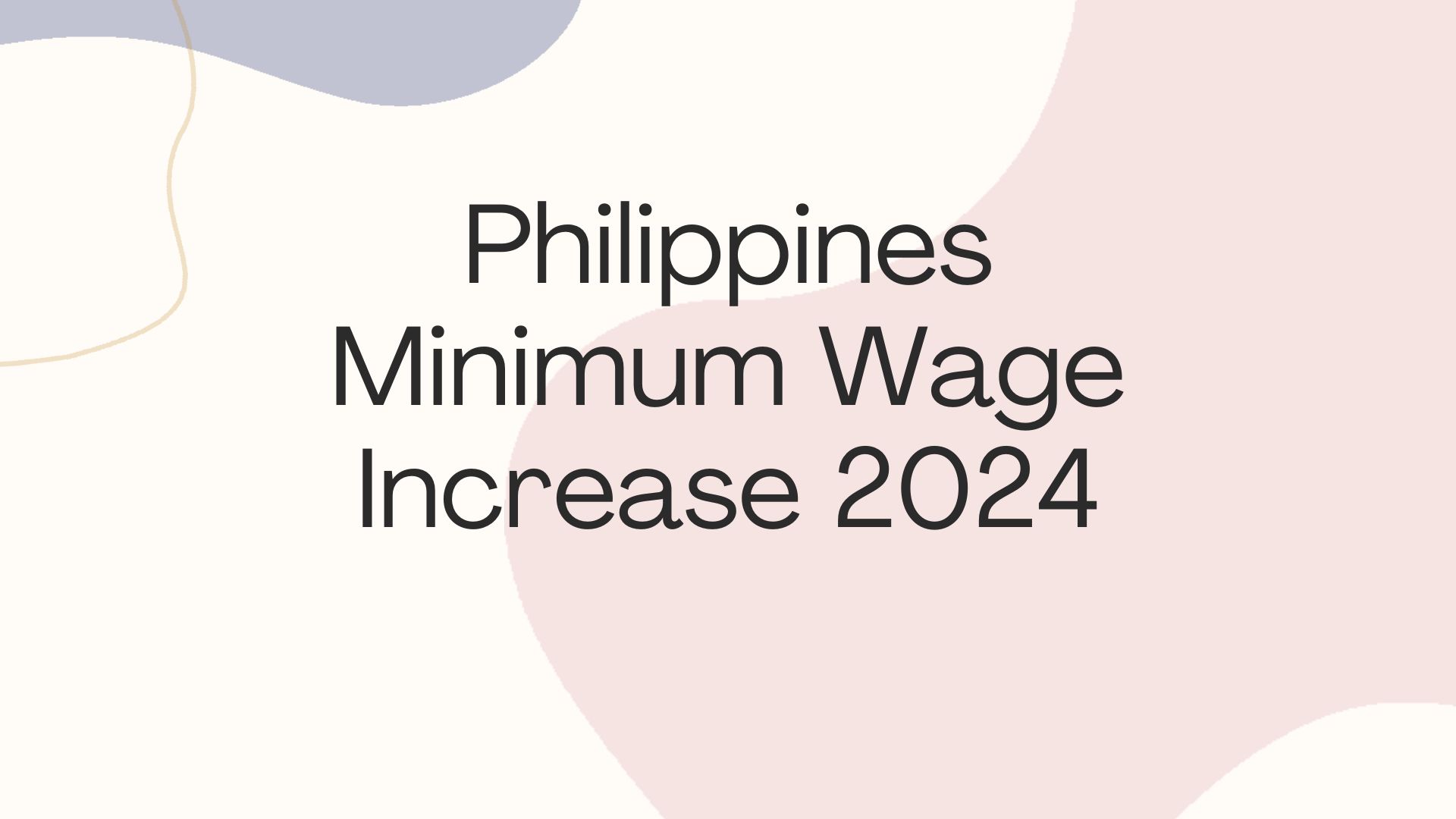If you are a working professional in the Philippines, this post is handy. Please read this page to learn more about the Philippines Salary Increase 2024: Estimated Salary and Minimum Wage Increase in the Philippines.

Philippines Salary Increase in 2024:
Employees in the Philippines have reason to anticipate a significant Philippines salary increase in 2024. The Salary Standardization Law of the Philippines establishes annual salary modifications based on current trends and is responsible for the country’s wage hikes.
Inflationary pressures and concerns about a competitive labor market still drive budgeting for salary increases. The proposed bill would require the Department of Budget and Management (DBM) to adopt an adjusted four-tranche payment rise schedule beginning January 1, 2024, and continuing annually until 2027.
In addition to eliminating the need for one-on-one salary negotiations, the Philippines Salary Increase System aims to promote employee accountability and efficiency. In this piece, we will review the Philippines Salary Increase 2024 in depth.
Philippines’ Daily Minimum Wage:
The Philippines’ minimum wage remained unchanged from 2023 to 2024, at 610 PHP per day. It’s also important to understand that the country’s minimum wage differs by province. The Philippines’ minimum wage rose from 89.00 PHP/day in 1989 to 610.00 PHP/day in 2023. Between 1989 and 2024, the average daily wage was 354.32 PHP. Metro Manila, or the National Capital Region (NCR), has the highest real minimum wage in January 2024, at 505.23 Philippine pesos daily. Region IV-A, or CALABARZON, was next, with a minimum daily income of 420.71 Philippine pesos.
Wage Order No. IVA-19, published on June 14, 2022, raised the provincial rate of daily minimum wages for Calabarzon (Region IV-A) in the Philippines. The minimum wage hike covers all private sector employees, regardless of employment, status, designation, or manner of income payment, for a typical workday of no more than eight hours.
Expected Salary and Minimum Wage Increases in the Philippines?
Various key labor market variables are projected to increase Filipino workers’ median salary growth from 6% in 2023 to 6.2% in 2024. Additionally, businesses in the Philippines are still budgeting for a 5.7% total median salary increase in 2024.
The average income has steadily increased since the outbreak a few years ago. This year, similar patterns have emerged across the nation’s many businesses. Most of this can be attributed to the increased demand for highly qualified individuals and the necessity to retain top talent in a competitive business. This wage adjustment is also heavily influenced by current inflationary pressures. Some industries see more robust demand than others. According to Mercer, the energy sector will likely see the highest pay increase—7%. Other industries, such as consumer goods, retail and wholesale, and high technology, are expected to increase at 6.8%, 6.7%, and 6.5%, respectively.
Ending Debate:
Southeast Asia attracts talent worldwide since it has historically been a center of economic development. As the threat of a recession looms, the dynamics of salary increases, job turnover, and workforce stability become increasingly significant. Increasing salary alone is not sustainable in these difficult times for organizations that must control personnel costs and profitability, among other things. Surprisingly, given the more extensive Asian context, the Philippines’ salary increase stands out. Certain businesses, such as shared services and outsourcing, retail, and consumer, will continue to hire as they grow. Employers in the Philippines will continue to offer incentives in 2024 to attract and retain a large workforce since this trend is expected to continue.